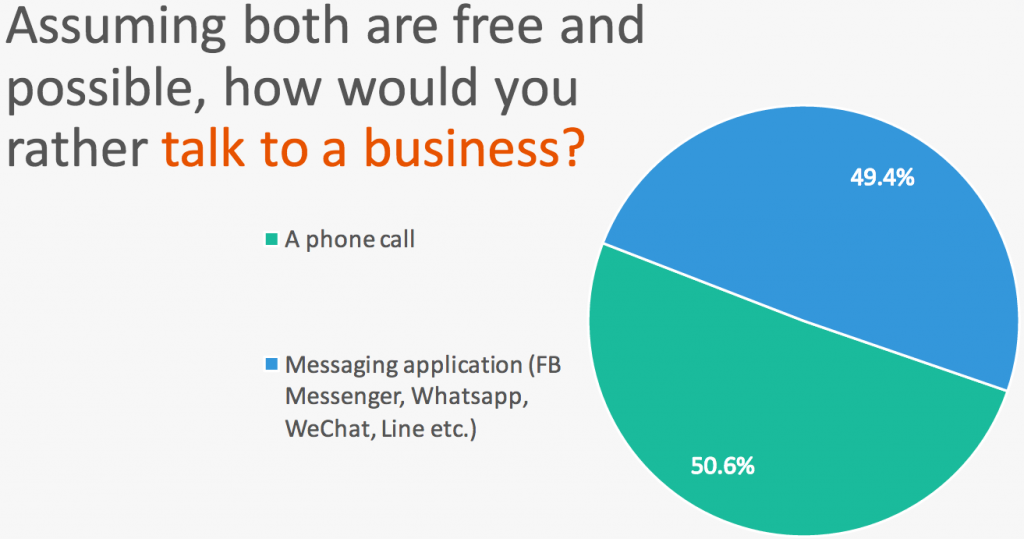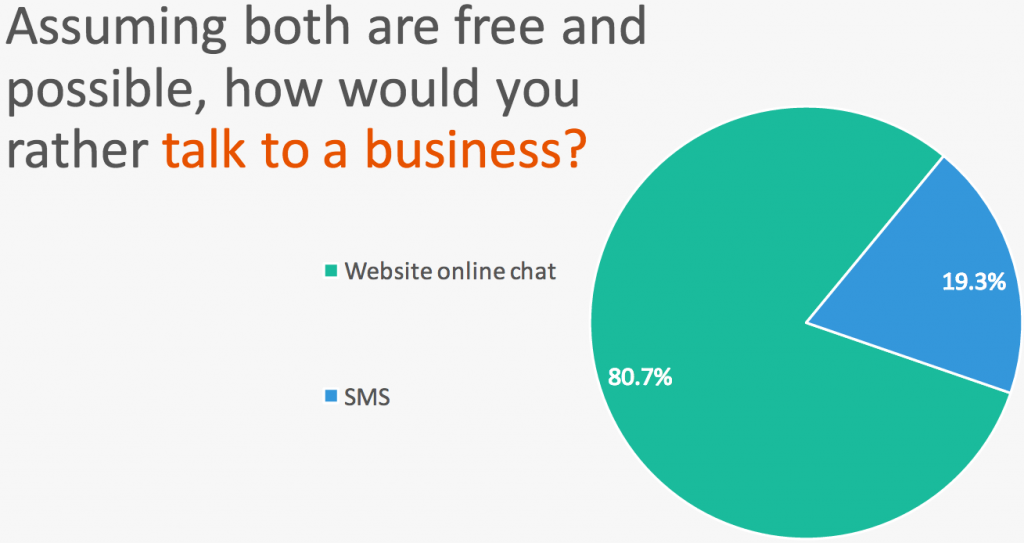# Information Report on "Chatbots for Marketing and Sales"
#### How chatbots are used for marketing
Chatbots are basis for big services/products for personal assistance and home automation, like Microsoft's Cortana, Apple's Siri, Facebook's M, Google's Now, and Amzon's Alexa.
Here’s how four messaging apps are using chatbots now:
* **Kik**, the company reported that 350 million messages were exchanged between bots and users.
* Some of Kik’s bots are "brand bots" used by companies like Sephora to connect with potential young customers.
* Others deliver content in message form.
* Kik launched a [bot store](https://bots.kik.com/) where users can browse and make their own bots.
* **WeChat**, a messaging service used in China that boasts 650 million monthly users.
* WeChat has bots that can book plane tickets, find you a job, and help you shop.
* WeChat also hosts bots that can order food or connect users with customer service agents.
* **Slack**, a popular messaging app -- less so among teens, more so in the workplace -- that hosts tons of bots.
* Some bots on Slack are aimed at productivity.
* There are bots for scheduling meetings, making to do lists, bots for analytics and stats.
* **Telegram**, a global messaging app similar to WhatsApp and Kik.
* Telegram hosts bots for productivity that will send you reminders as well as a trivia bot and image reaction keyboard.
* Telegram has a [Bot Store](https://storebot.me/)
#### Reasons to consider chatbots for sales and marketing
* According to Business Insider, over 80% of businesses said they already use chatbots, or plan to use them by 2020.
* Consumer behavior has shifted from social networks to messaging platforms such as SMS, Facebook Messenger, Apple iMessage, Slack, and WeChat. The growth of the four largest messaging apps exceeds that of the four largest social networks.
* Businesses and brands are embracing automation technologies to increase revenue, this includes chatbots for sales, marketing, and customer service.
* A tool to sell products & services, an example of this is clothing company H&M. When customers interact with the company’s bot, they’re quizzed about the style of clothing they prefer. Then, when the bot has enough information, it can make recommendations that are tailored to the customers’ tastes.
* Will improve the customer experience.
* Will reduce labor cost.
* Chatbots are available anytime, customers can contact businesses at any time, not just during working hours. Bots can sell your products for you, and because they’re online 24/7, they can actually make good on the phrase "make money while you sleep."
* Chatbots can gather customer feedback and behaviour for futher analysis to give better insights, better learn about your audience. By monitoring your customers’ patterns, you can discover which products or services they prefer (and, in turn, let you know what types of products to stock). You may even find out if there are common problems or issues that arise with your offerings.
#### Current state of chatbots
* One important disntiction of Chatbots from other channels is their "Natural Language Communication", they speak and type like a real person.
* Bots are not all alike, some are very basic (dumb), and some are sophisticated (smart). Smarter bots can store, synthesize, and recall lots of information to help make your life easier. AI and machine learning keep enhancing the experience by understanding queries and producing new responses to new input that wasn't originally programed.
* AI + bots is not the perfect interface yet, but we’re close. People still like to press buttons. Pure natural language conversation with a bot only works if the bot’s AI is powerful enough. Since no bot has yet passed the [Turing test](https://www.wikiwand.com/en/Turing_test), its safe to say that is still a ways off.
* Chatbots that live in messaging apps have a potential to be used more oftne, since many people only ever use 3 apps on their phone these days, and two of them are usually messaging apps. They don't require users to download anything.
* From Gartner’s 2017 Hype Cycle, we can see "Conversational User Interfaces," "Virtual Personal Assistants," on their rise UP to the Peak.



#### ROI of chatbots in marketing
It is very difficult to measure marketing ROI, on social media for example, because digital marketers cannot correlate the metrics they look for in their efforts, like engagement ratio's and click rates. Time and time again we see that click rates and ROI have virtually no correlation. Ultimately it doesn’t matter how many people click on the link, it matters what they do once they get to the landing page.
A better metric for correlation with ROI is the bounce rate (a higher bounce rate negatively correlates with ROI) and the average time on page (a longer average time on page positively correlates with ROI).
First, it can increase ROI by decreasing labor costs by automating much of your customer service interactions in social media chat platforms.
Second, it can increase ROI by helping consumers navigate your online store and complete purchases right from the social media chat platform helping turn social media followers into actual customers.
Example: "Cost and Time Savings from Chatbots for the Banking & Healthcare Sectors"
* 4 minutes + = Average time saving per chatbot enquiry when compared with traditional call centres.
* $0.70 = Average cost saved per chatbot interaction in 2022, for messaging based banking bots.
* $0.019 million = cost savings in 2017
* $0.343 million = cost savings in 2019
20% = Success Rates for Banking Chatbots in 2017
93% = Success Rates for Banking Chatbots in 2022